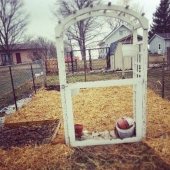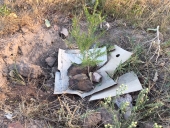Hi, I've never planted a thing in my life, so I'm a bit overwhelmed right now. I finished reading Gaia's Garden, am halfway through "How to Grow More Vegetables..." - John Jeavons and halfway through "All New Square Foot Gardening" -Mel Bartholomew. About Me:
*live in a small suburban lot in Dallas, TX
*starting with one small raised bed (4'x12'x1')
*doing intensive gardening
*goal to spend no $$
I'm currently trying to prepare my bed's soil. Regarding soil concerns, I have access to:
* tons of free 2-3 month old horse manure (lucky, I Know

)
* assorted mulched leaves, not sure what types, just started converting to leaf mold
*some rotting wood/tons of twigs/branches (but I don't want to wait a year before being able to plant, tying up nitrogen is a concern)
*newly composting fruits/veggies/urine (only a couple weeks along).
*current topsoil in bed, which seems to be somewhat loamy up to 3-4 inches down, then turns to red clay. I mixed it with water and softener, and when it settled it appeared to be 1/3 sand, 1/3 silt (or a little less), 1/3 clay.
My understanding is that good soil is 1/3 humus, 1/3 organic matter (
compost), 1/3 sand/silt/clay, based on the concept of Mel's Mix. My plan is to steal some topsoil from the woods (better than buying it bagged from a store?) , scrape off the top 3 inches of my topsoil from inside my bed, and use this combination as my topsoil element. I will then mix 2 parts topsoil to 1 part compost/horse manure. I will lay down newspaper, then fill the bed 9 inches with the topsoil mix (3 inches below ground to 6 inches above). The top 6 inches I will fill with leaf mulch/mold.
------------------------------------------------------------------------
Maybe instead I should just follow Gaia's Garden's "Ultimate Sheet Mulch" recipe? That is, use the existing soil, get a soil test, add amendments (which I'll have to buy :<), thin layer of manure, newspaper, thin layer of manure, 8/12 inches of organic matter (leaves/old horse manure?), 1-2 inches of compost, 2 inches of seedless mulch (more leaves?).
I've got a ton more questions, but I don't want to throw too many out at once.





 )
)








































 I'll pretty much be using Mike's plan to fill the bed back in. I did read this though:
I'll pretty much be using Mike's plan to fill the bed back in. I did read this though:
























